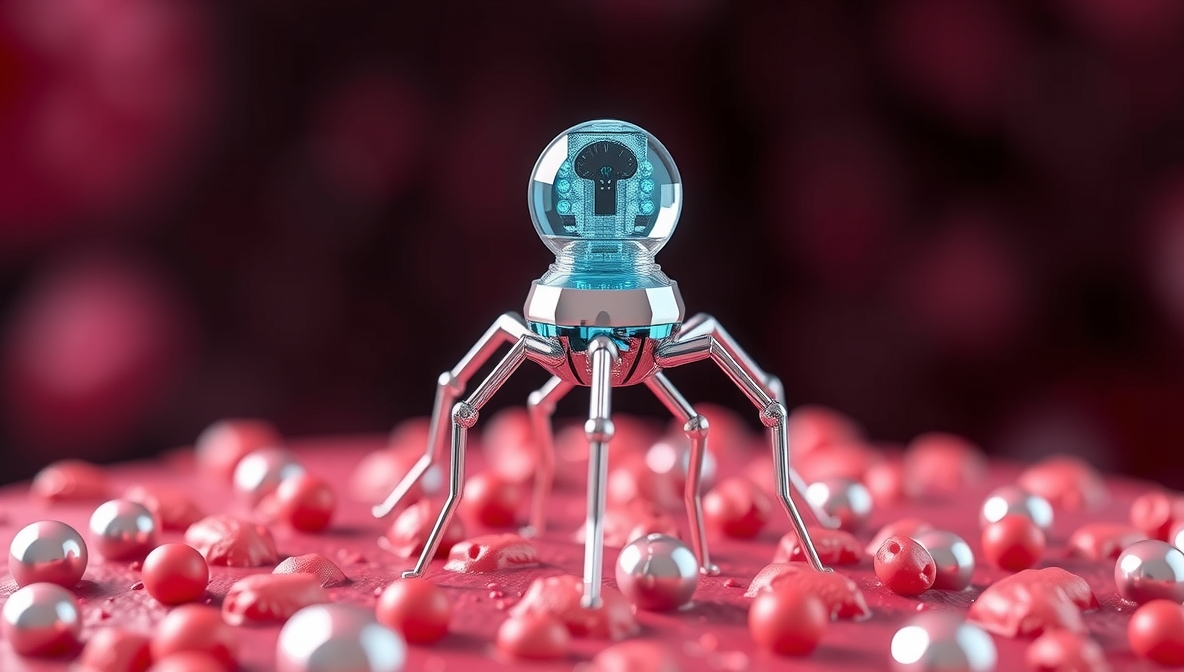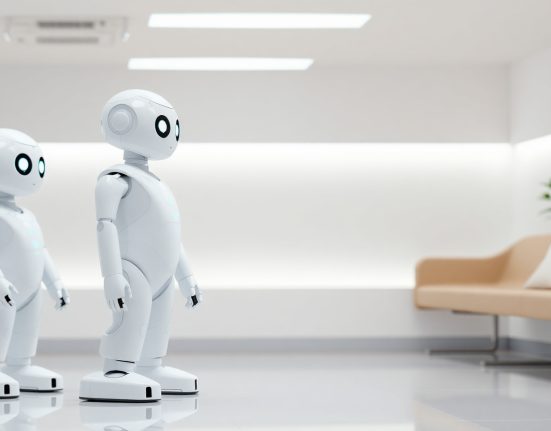A Review of Miniature Robots Developed for Medical Purposes – From Early Diagnosis to Minimally Invasive Surgeries
In recent decades, the world of medicine and technology has experienced far-reaching developments that challenge the traditional boundaries of medical treatment. Rapid advancements in nanotechnology, robotics, and bioengineering have led to the development of innovative platforms called nano-bots or nano-robots – tiny devices measuring just a few microns or even nanometers, designed to operate within the human body and perform complex medical tasks. This technological revolution, occurring relatively quietly away from the public eye, holds enormous potential to transform medicine as we know it, from advanced diagnostic systems and targeted drug delivery mechanisms to performing complex surgical procedures with the highest possible level of precision and delicacy.
Contrary to popular images presented in science fiction movies, real nano-robots are not miniature machines equipped with tiny motors and robotic arms, but rather sophisticated molecular structures that exploit physical and chemical principles at the microscopic level. They are developed using a combination of biological materials such as proteins, enzymes, and DNA, together with synthetic materials like polymers, metallic nanoparticles, and special ceramics. Progress in this field relies on breakthroughs in basic sciences such as quantum physics, molecular chemistry, and cellular biology, alongside advanced computational capabilities and manufacturing technologies that enable the design and construction of structures at the nano-scale. The success of medical nano-robots represents not only an impressive technological achievement but also humanity’s ability to understand and manipulate the most basic building blocks of life and matter.
The field of medical diagnostics is one of the first areas where nano-robots are beginning to show their revolutionary impact. Current systems primarily focus on the use of nano-sensors capable of detecting minute biochemical changes in the cellular environment, levels of specific molecules, the presence of cancer cells, or other disease markers. The ability of nano-robots to navigate through the bloodstream, penetrate tissues, and perform tests at the molecular level allows for early diagnosis of many diseases, including cancer, cardiovascular diseases, bacterial and viral infections, and degenerative diseases of the nervous system. The decisive advantage of this technology lies in its ability to provide diagnostic information in real-time, without the need for invasive procedures or laboratory samples, and often before clinical symptoms appear. For example, nano-robots are currently being developed that can identify individual cancer cells in the bloodstream, which could lead to early diagnosis of cancer metastases and faster treatment that would significantly increase chances of recovery.
Beyond diagnostics, nano-robots offer revolutionary possibilities in the field of drug delivery. Unlike traditional methods, where drugs are dispersed throughout the body and affect not only diseased areas but also healthy tissues, nano-robots can carry a drug payload and release it precisely at target sites. Advanced systems include nanoparticles equipped with navigation mechanisms that respond to external magnetic fields, optical stimuli, or specific biochemical markers. For instance, nano-robots intended for cancer treatment are designed to recognize unique molecules expressed on the surface of cancer cells, attach to them, and release cytotoxic drugs directly into the cancerous cell. This targeted approach allows for a dramatic reduction in the side effects of chemotherapy treatments while increasing their effectiveness in destroying cancer cells. Additionally, nano-robots are being developed to cross challenging biological barriers such as the blood-brain barrier, which could open new treatment possibilities for diseases like Alzheimer’s, Parkinson’s, and stroke.
Another groundbreaking technological challenge is the development of surgical nano-robots, designed to perform complex medical procedures at the cellular and molecular level. Unlike macroscopic surgical robots such as the da Vinci system, which is already used in minimally invasive surgeries today, surgical nano-robots will be able to operate inside blood vessels, tissues, and even within individual cells. They are designed to perform actions such as removing plaque from blood vessels, repairing damaged tissues, assembling and healing damaged proteins, and even repairing or modifying genetic material. For example, researchers in the field are developing nano-robots that can identify and mechanically remove atherosclerotic plaque from arteries, as an alternative to more invasive surgeries. Others are working on nano-machines capable of repairing heart tissue damage after a heart attack by injecting stem cells and specific growth factors into the damaged areas. The therapeutic possibilities opening up to us are almost limitless, as for the first time in human history we are developing the ability to intervene in pathological processes at the minutest level at which they occur.
Despite this impressive progress, there are still many challenges in the development and implementation of medical nano-robotics. One of the main challenges is the energy source – how to provide such tiny nano-machines with the energy required for their operation within the body for extended periods. Research solutions include utilizing biochemical energy sources in the body itself, such as glucose or ATP, using external electromagnetic energy, or developing bio-mimetic mechanisms that mimic the action of natural biological structures such as bacteria or blood cells. Another significant challenge is safety – ensuring that the nano-robots themselves do not cause damage, immune responses, or toxic effects. Research focuses on developing biocompatible, biodegradable materials that can be safely eliminated from the body after completing their mission. Ethical and regulatory issues also pose a significant barrier to the rapid integration of the technology into routine clinical treatment.
The future of medical nano-robotics promises advancement in several fascinating directions. One of the most promising areas is the development of “smart” nano-robots equipped with advanced information processing systems and autonomous decision-making capabilities. Quantum computing and bio-computing technologies may enable nano-robots to perform complex calculations, learn from their environment, and make real-time therapeutic decisions based on patient-specific physiological data. For example, future nano-robots might be able to continuously monitor blood glucose levels in diabetic patients and release insulin precisely as needed, effectively acting as a distributed artificial pancreas. Another development direction is the creation of nano-robotic systems capable of communicating with each other and creating collaborative networks that enhance their collective capabilities. Such developments could lead to a genuine revolution in our ability to treat chronic diseases, heal injuries and damage to tissues and organs, and even slow aging processes.
The social, economic, and ethical implications of the nano-bot revolution are enormous in scope. On one hand, the technology promises to dramatically improve our ability to treat diseases, extend healthy life expectancy, and alleviate suffering. On the other hand, high development costs and technological complexity could deepen disparities in access to medical treatment if special emphasis is not placed on making the technology accessible to vulnerable populations and developing countries. Additionally, the ability to change and intervene in the human body at such a fundamental level raises complex ethical questions regarding the definition of treatment versus enhancement, medical privacy, and the legitimate boundaries of technological intervention in human biology. As a society, we will need to address these challenges in parallel with technological advancement to ensure that the silent revolution taking place in the human body serves humanity in the best possible way, while preserving the core values of human dignity, equality, and social justice.
In conclusion, medical nano-robotics represents one of the most fascinating innovation frontiers at the intersection of medicine, engineering, and life sciences. While some of the technologies described in this article are still in early research and development stages, rapid progress in the field promises that some will become clinical reality in the coming decades. The silent revolution of nano-bots in the human body is expected to fundamentally change the way we diagnose, treat, and prevent diseases, thereby opening a new chapter in the history of human medicine. As with any significant technological revolution, our main challenge will be to ensure that its fruits serve all of humanity, while thoughtfully addressing the ethical, social, and regulatory implications of this life-changing technology.












